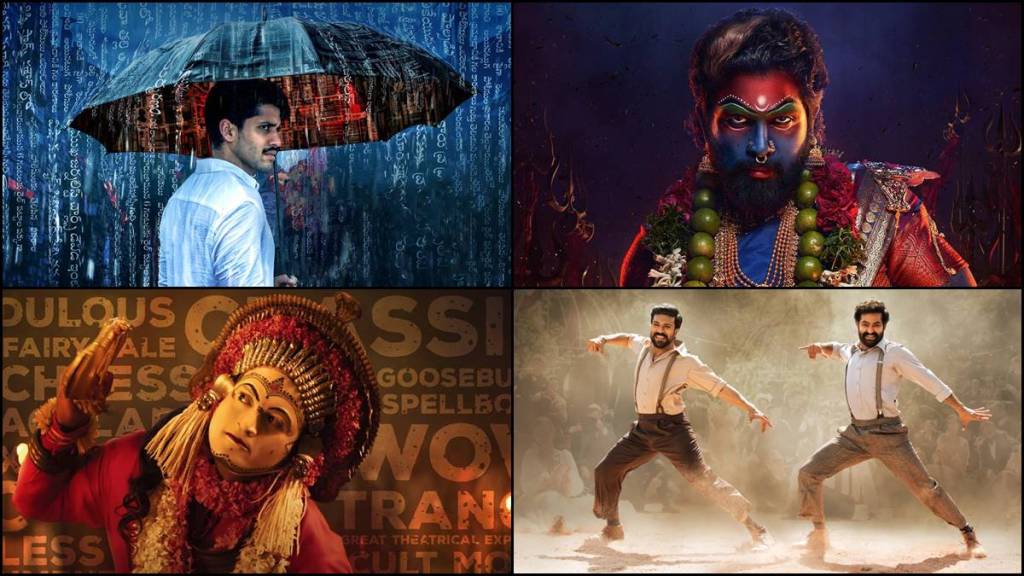Cinema, often referred to as the universal language, has the unique ability to transcend linguistic boundaries, connecting people through the magic of storytelling. With the advent of Over-the-Top (OTT) platforms, the world of cinema has witnessed a fascinating phenomenon—the accessibility of South Indian films in Hindi. This convergence of cultures through the medium of cinema not only broadens the horizons of storytelling but also creates a bridge that allows audiences to explore the rich tapestry of South Indian cinema in a language familiar to many.
The globalised digital era has ushered in a new era of inclusivity in entertainment. OTT platforms, such as Netflix, Amazon Prime, and Disney+ Hotstar, have become platforms for cinematic exploration, offering a diverse range of films from various regions. In this landscape, the availability of South Indian films in Hindi has become a game-changer, enabling audiences across linguistic backgrounds to experience the artistic brilliance and cultural richness of South Indian cinema.
South Indian cinema has long been celebrated for its unique storytelling, compelling narratives, and vibrant visuals. The translation of these films into Hindi ensures that the essence of these stories remains intact, allowing a wider audience to connect with the diverse characters and cultural nuances presented on screen. Whether it’s the high-energy action sequences of a Rajinikanth film or the emotionally charged performances in a Mani Ratnam film, the magic of these narratives finds resonance in the hearts of Hindi-speaking audiences.
We recently saw Dhootha starring Naga Chaitanya released on Amazon Prime Video in Telugu, Tamil, Kannada, Malayalam, and Hindi. While talking to the actor in an exclusive interview, he revealed how language is no longer a barrier and how the audience is also able to watch diverse content. “With OTT platforms, the language barrier has blurred. As actors, we can connect to our audience from across the globe. That’s beautiful to watch,” he said.
Mani Ratnam, a filmmaker, producer, and screenwriter, who predominantly works has given us some of the biggest blockbusters in Tamil, Hindi, Telugu, Malayalam, and Kannada films expressed, “Cinema, at its core, is about storytelling. The availability of South Indian films in Hindi on OTT platforms extends the reach of our stories. It’s heartening to witness our narratives being embraced by audiences across linguistic lines.”
“Language should never be a barrier to the appreciation of art. The translation of South Indian films into Hindi allows for a beautiful exchange of cultures and stories, fostering a sense of unity and understanding” Nandita Das told us.
SS Rajamouli, the visionary behind Bahubali, RRR, and many such films feels translation is a boon. The translation of South Indian films into Hindi is not just a matter of linguistic convenience; it is a celebration of cultural diversity. Viewers are exposed to different traditions, lifestyles, and perspectives, fostering a sense of unity amidst diversity. As audiences immerse themselves in narratives from different regions, they gain a deeper understanding and appreciation for the cultural nuances that make each story unique. He told financialexpress.com, “The world is becoming more connected, and cinema is a powerful medium that facilitates this connection. When our films are accessible to a wider audience through Hindi translations, it opens up new avenues for cultural exchange and appreciation.”
The availability of South Indian films in Hindi has not only expanded the viewer base but has also contributed to the growth and recognition of the South Indian film industry on a national scale. Filmmakers, actors, and technicians from the South are gaining recognition beyond regional borders, creating a more inclusive and collaborative film landscape.
Kamal Haasan expressed, “Cinema is a universal language that transcends boundaries. The availability of South Indian films in Hindi on OTT platforms only strengthens the bond between cultures and allows audiences to appreciate the diverse narratives that each region has to offer.”
Vijay Deverakonda told us, “The beauty of storytelling lies in its ability to connect with people on an emotional level. It’s heartening to know that our stories are now reaching audiences who might not be familiar with our native languages. This is a testament to the power of cinema.”
The availability of South Indian films in Hindi on OTT platforms catalyses cultural harmony. As audiences from different linguistic backgrounds embrace and appreciate films that were once confined to specific regions, a shared cultural experience is born. This cinematic exchange not only fosters a sense of unity but also allows viewers to gain insights into the traditions, customs, and societal landscapes of South India.
The exposure of South Indian films to a broader Hindi-speaking audience has undoubtedly contributed to the growth and recognition of the industry. Filmmakers and actors from the South are now gaining national acclaim, and their work is being appreciated on a larger scale. This symbiotic relationship between regional cinema and the national audience enriches the cinematic landscape, fostering a more diverse and inclusive film industry.
The magic of multilingual movies, particularly the exploration of South Indian films in Hindi on OTT platforms, represents a celebration of diversity and the universality of storytelling. As viewers continue to immerse themselves in narratives that transcend linguistic barriers, cinema becomes a powerful tool for cultural exchange and understanding. The enchanting world of South Indian cinema, now accessible in Hindi, is a testament to the transformative power of cinema, bringing people together through the shared experience of compelling stories, vibrant characters, and the universal language of emotion.

